It's all about the classical music composers and their works from the last 400 years and much more about music. Hier erfahren Sie alles über die klassischen Komponisten und ihre Meisterwerke der letzten vierhundert Jahre und vieles mehr über Klassische Musik.
Total Pageviews
Sunday, June 29, 2025
Anne-Sophie Mutter, Daniel Barenboim, Yo-Yo Ma – Beethoven: Triple Concert
"Beethoven's Silence" - Ernesto Cortazar
You Are My Everything - Ernesto Cortazar
Saturday, June 28, 2025
Johann Strauss II - The Blue Danube
Galliano and Marsalis - La Vie En Rose
Friday, June 27, 2025
Inspired by the Night: Fauré and Szymanowski by Maureen Buja
by Maureen Buja
The choice of the two composers is interesting, mainly because of their separation in time, and the addition of the little works rounds out the composers’ repertoire.
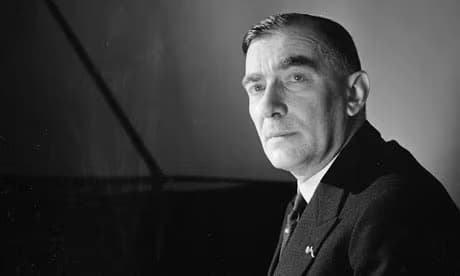
Karol Szymanowski
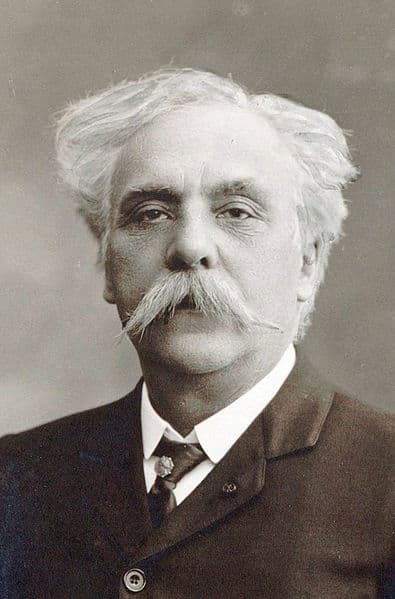
Gabriel Fauré
The Polish composer Karol Szymanowski changed his style from the early one that followed the German Romantic school to later Impressionistic and then atonal styles. Folk music was another influence. He attended the State Conservatory in Warsaw from 1901 to 1905 and was its director from 1926 to his retirement in 1930. He didn’t serve in WWI due to his lameness and devoted his time to composition and study, working on Islamic culture, ancient Greek drama, and philosophy. He travelled extensively in Europe and North Africa and much of this came out in his opera Król Roger (King Roger); one critic raved about it: ‘we have a body of work representing a dazzling personal synthesis of cultural references, crossing the boundaries of nation, race and gender to form an affirmative belief in an international society of the future based on the artistic freedom granted by Eros’.
He died in 1937 of tuberculosis while under treatment in Switzerland. He’s buried at Skalka in Kraków, where the most distinguished Poles are interred.
It is not known if Szymanowski ever met Fauré, although we do know that Szymanowski met with Ravel. There is much to connect Fauré and Szymanowski, such as Szymanowski’s activities in the Société Musicale Indépendente, which promoted French music and was under the directorship of Fauré. They both studied early musical styles and counterpoint and, later, both forged individual styles that were linked to classical form and tonality, but which were unique to each composer. Both wrote songs early in their career, and this lyrical link carries through each composer’s music.
Szymanowski’s violin sonata was written when he was 22, and it is quite Romantic in style. Zavaro sees a link to the night theme of the recording through its second movement, which begins ‘with the calm of a starry sky’. Fauré’s more rarely played Second Sonata was written after he’d started to become deaf. It’s inward-looking and has a kind of ‘sonic opacity’, which she calls an ‘acoustic night’. Repeated hearings help you see through the darkness and end in a night-seeing clarity. Composer Charles Koechlin called Fauré’s sonata ‘a magnificent ascent to the summits of joy’ and Zavaro imagines the top of the mountain as a first step to flight.
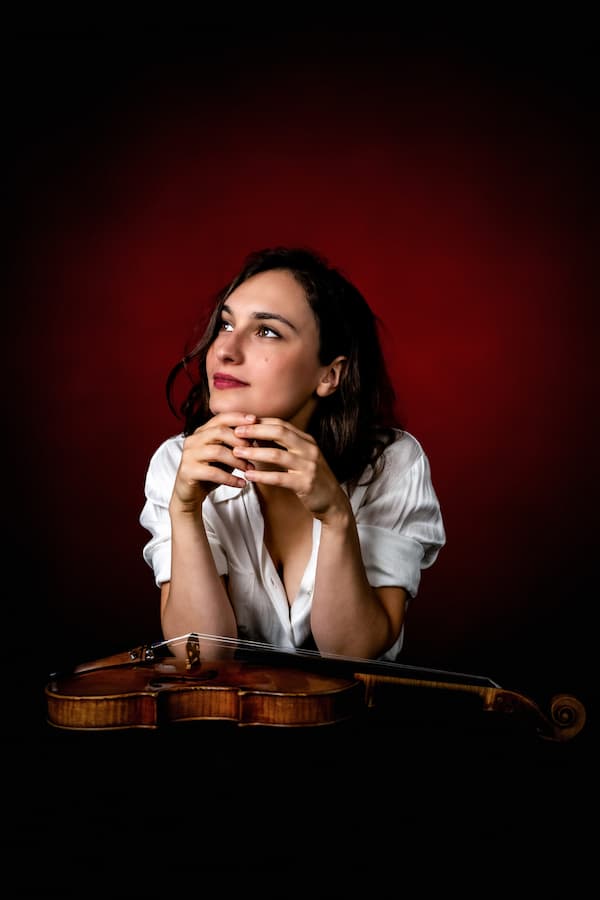
Eva Zavaro (photo by Olivier Lalane)
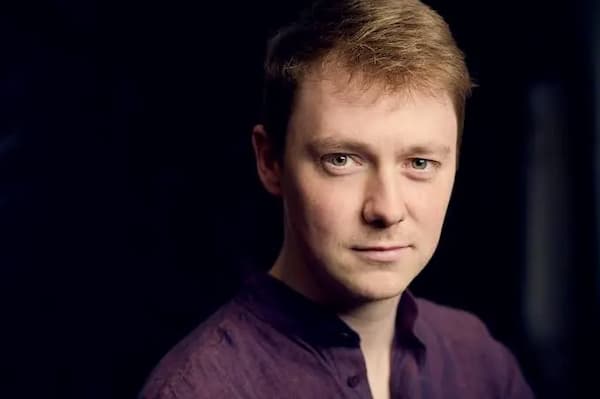
Clément Lefebvre (photo by Jean-Baptiste Millot)
Other works on the album include Szymanowski’s La Berceuse d’Aïtacho Enia, Op.52 and Notturno e Tarantella, Op.28; Fauré’s other works include his Berceuse, Op.16 and Après un rêve, Op.7 n°1. By closing with Après un rêve, Zavaro chooses to close with an example of Fauré’s melodic genius. The work is one of his most popular, and she says, ‘ It possesses an expressive intensity unique to its composer, present from his earliest works, whose apparent lightness and deceptive simplicity conceal great depth’.
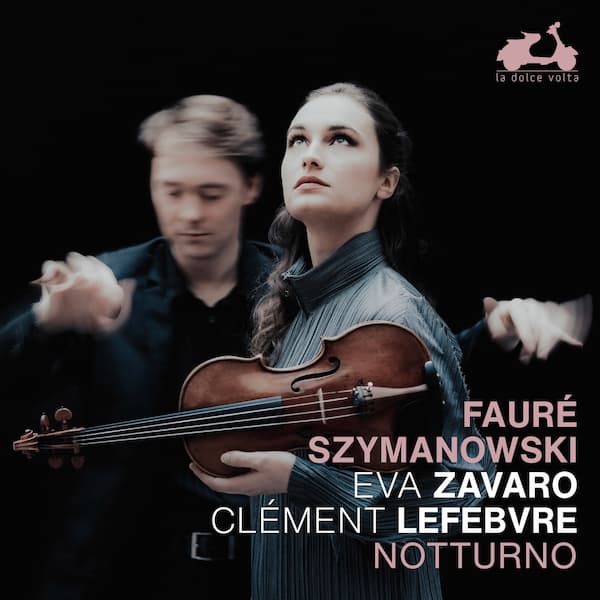
Fauré, Szymanovski: Notturno
Eva Zavaro violin, Clément Lefebvre, piano
La Dolce Volta LDV 127
Official Website
For more of the best in classical music, sign up for our E-Newsletter
The Sounds of Summer
by Maureeen Buja
The sun has come up, and the birds start to make their statements. The European Robin, the Hooded Crow, and doves all greet the new day.
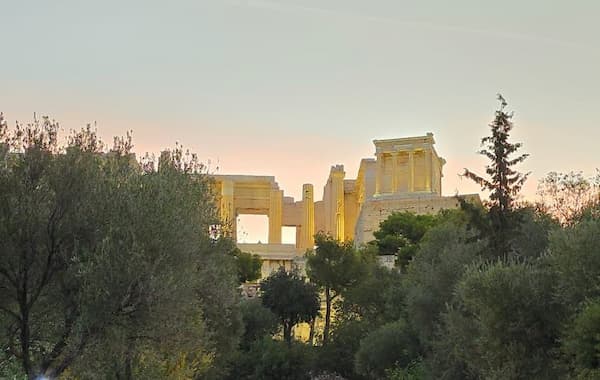
Dawn at the Acropolis (photo by Maureen Buja)
Your friends are up and about on their bikes because you can hear their bicycle bells in the distance.
The local church sounds the hour with the Westminster Chime. It’s time to get out and go!
Now, where to go? If off to the countryside, then it’s the sounds of animals in the fields that you might hear.

Cows with bells
If you go to the seaside, then it’s the roar of the waves and the equally loud roar of all the beach people.
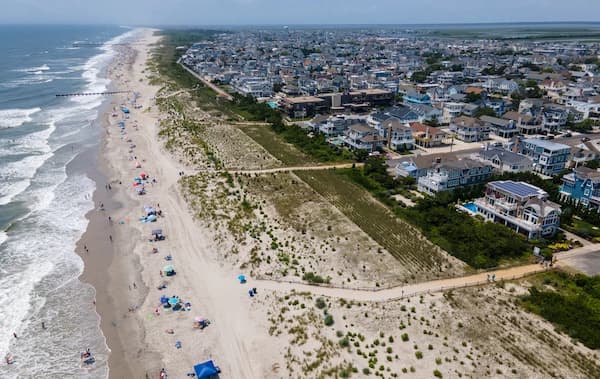
The Jersey shore
If you go down to the pond, then there will be different water sounds.
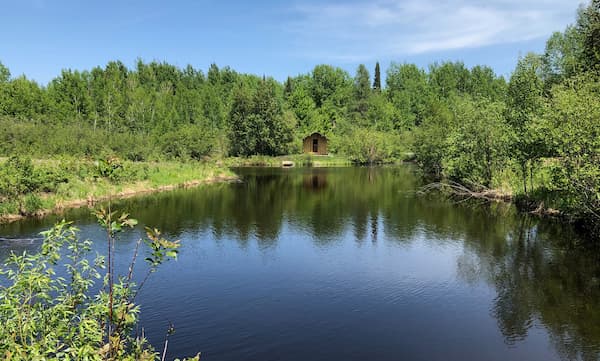
Pond
Out in the countryside, the little insects are active: grasshoppers and, as it gets hotter, the katydids come out.
Perhaps it’s time to just lie down and rest your eyes for a bit. Nope, nope, nope, that couldn’t possibly be you making that noise!
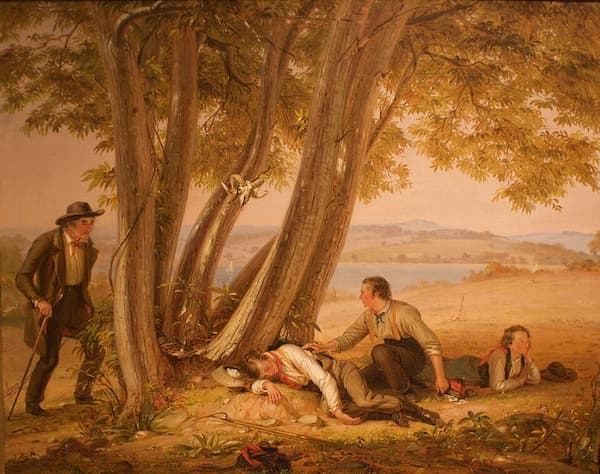
William Sydney Mount: Boys Caught Napping in a Field, 1848 (Brooklyn Museum)
In the evening, let’s go to a concert. Down at the park, there’s something fun going on, and the crowd is waiting for it to start!
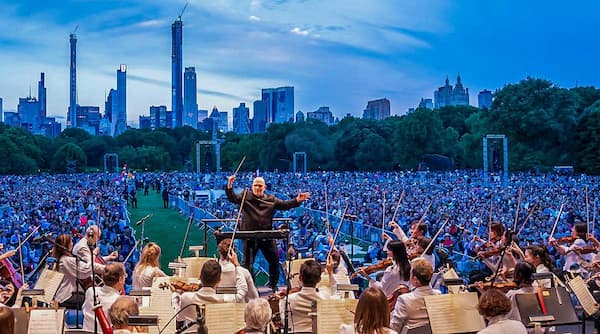
New York Philharmonic, Concert in the Park
The orchestra tunes.
In our concert, Samuel Barber brings us back to his childhood in Knoxville, in the summer of 1915.
Afterwards, as you step out into the plaza, children are celebrating with some small firecrackers.
But, down in the park, the big fireworks show is on.
After the show, the local band starts with Sousa Marches.
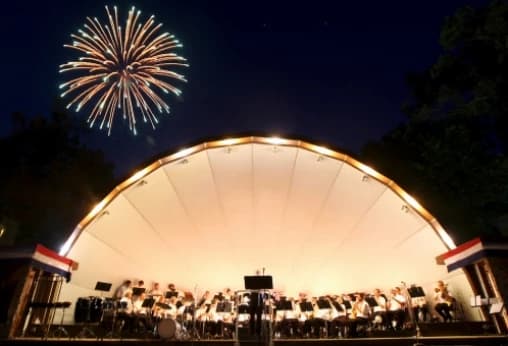
Dekalb, IL Municipal Band, Kirk Lundbeck, dir. – Concert Shell with fireworks
And closes with one of Sousa’s most familiar works. Listen out for those piccolos at the end!
It’s late, and everyone is home, tired after a long day outdoors, and it’s only the owls who patrol to watch through the night.

Tawny Owl at Night
How does your summer day go?
A Tribute to Alfred Brendel The Philosopher-Pianist
by Georg Predota
Crafting Musical Narratives
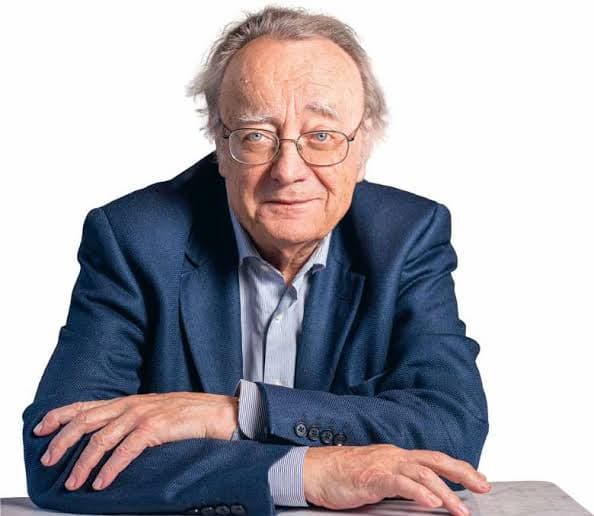
Alfred Brendel
His performances were not just concerts but profound dialogues with the music, marked by a clarity that seemed to illuminate the very architecture of each composition. Audiences didn’t come for the man, they came for the music.
Alfred Brendel’s virtuosity was undeniable, but it was never about showmanship. Every note he played was rich and expressive, never indulgent and his interpretations commanding, yet free of pretension. Brendel’s performances were masterfully shaped, each one a journey with a clear sense of purpose.
But what truly set him apart were the countless subtle decisions, his phrasing, the contrasts he drew, the delicate shifts in tone. He never raced through a piece, yet the sheer depth of detail he revealed made it feel as though the listener was constantly discovering something new, moment by moment.
Revelatory Art
Brendel made the familiar seem revelatory. In his performances of Beethoven, according to a critic, he projected “an X-ray picture of each sonata onto a screen,” revealing the inner workings of the music with surgical precision yet profound emotion.
This intellectual approach earned him the moniker of the “philosopher’s pianist,” a title he wore with pride but also with a characteristic twinkle of self-awareness. Brendel himself once remarked, “The word LISTEN contains the same letters as the word SILENT,” a pithy encapsulation of his belief that true musical understanding begins with attentive stillness.
Pianists across generations have cited Brendel as a beacon of inspiration. Mitsuko Uchida, the renowned Japanese-British pianist, praised his ability to balance structure and spontaneity. “Alfred had this extraordinary gift of making every note speak, yet never losing the thread of the composer’s thought. His Beethoven was like a conversation with the divine, rigorous, yet utterly human.”
Uchida’s words echo the sentiment of many who saw Brendel’s performances as a masterclass in musical storytelling, where technical brilliance served the purpose of uncovering the philosophical underpinnings of the score.
Blending Intellect and Artistry
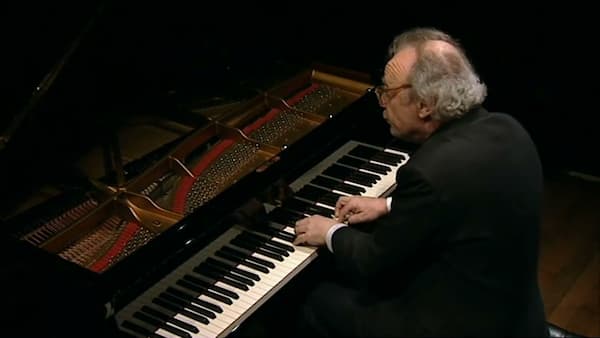
Alfred Brendel
Brendel’s influence extended beyond the stage through his erudite writings. His essays, collected in a number of books, are celebrated for their wit and insight. His former student Till Fellner wrote, “His words were as illuminating as his playing. He taught us that to play Schubert is to suspend gravity, to let the music float in a dreamlike state.”
His approach was not without its detractors. Some found his meticulous style too cerebral, lacking the fiery abandon of other postwar titans. Yet even those critics acknowledged his unmatched ability to reveal the music’s inner logic. Pianist András Schiff, reflecting on Brendel’s legacy, noted, “He showed us that intellect and emotion are not opposites but partners. His Mozart was playful yet profound, like a poet who knows when to smile.”
Brendel’s life was as rich as his music. Raised in Zagreb and later based in London, he was a polymath who could have excelled as a poet, painter, or author. His lectures and masterclasses were legendary, filled with anecdotes delivered with a dry wit that disarmed audiences.
Pianist Imogen Cooper recalled, “I once attended a masterclass where he spent 20 minutes on a single phrase in Beethoven, dissecting it with the precision of a surgeon and the passion of a poet. We were all spellbound.”
Profound Legacy
His recordings remain benchmarks, yet he remained humble and emphasised the music over the performance. “Self-discovery is a slower process but a more natural one,” he wrote, a reflection that applied as much to his own career as to his advice for young pianists.
Alfred Brendel had the ability to make the music feel both timeless and immediate, as each performance was an act of discovery. Yet, his legacy is not just in the notes he played but in the ideas he championed.
For Brendel, music was a journey of the mind and heart, that listening demands silence, and that grace is a form of strength. As Richard Morrison wrote, “Brendel’s encounters with music were transformative, not just for him but for all who listened.”
In an age of distraction, Brendel’s legacy invites us to slow down, to truly listen, and to seek depth over spectacle. Through his playing and his writing, he offered not just sound but insight, essentially a voice of enduring clarity that will resonate through generations.
